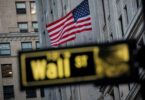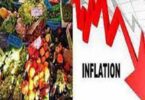WASHINGTON (Reuters): Annual U.S. inflation rose at its slowest pace in more than two years in June, with underlying price pressures receding, a trend that, if sustained, could push the Federal Reserve closer to ending its fastest interest rate hiking cycle since the 1980s.
The improving inflation environment was reinforced by other data on Friday showing labor costs posted their smallest increase in two years in the second quarter as wage growth cooled. It mirrored reports this month showing the economy shifting into disinflation mode, with consumer prices moderating sharply in June and producer inflation muted.
That, together with labor market resilience, which is underpinning consumer spending, raised cautious optimism of a “soft landing” for the economy envisaged by Fed officials rather than the recession that most economists have been predicting.
“The inflation outbreak is winding down quicker and with less pain for the labor markets than economists could have imagined just a year ago,” said Christopher Rupkey, chief economist at FWDBONDS in New York. “This means policymakers can most likely skip a rate hike at the upcoming September meeting.”
The personal consumption expenditures (PCE) price index increased 0.2% last month after edging up 0.1% in May, the Commerce Department said. Food prices dipped 0.1% while the cost of energy products increased 0.6%. In the 12 months through June, the PCE price index advanced 3.0%. That was the smallest annual gain since March 2021 and followed a 3.8% rise in May.
Excluding the volatile food and energy components, the PCE price index gained 0.2% after rising 0.3% in the prior month. That lowered the year-on-year increase in the so-called core PCE price index to 4.1%, the smallest advance since September 2021. The annual core PCE price index climbed 4.6% in May.
Line chart with data from the Bureau of Economic Analysis and Federal Reserve shows PCE inflation slowed to 3% year-on-year in June, while core PCE inflation also eased to 4.2%. Economists polled by Reuters had forecast the core PCE price index would gain 0.2% and rise 4.2% on a year-on-year basis. They calculated that the “super core” increased 4.1% on a year-on-year basis after rising 4.7% in May. This measure of services less housing is being closely monitored by policymakers to gauge progress in the inflation fight.
The PCE price indexes are the Fed’s preferred inflation measures for its 2% target. The core PCE price index reading in June was just above the Fed’s recent forecast of 3.9% for the fourth quarter of 2023.
The U.S. central bank on Wednesday raised its policy rate by 25 basis points to the 5.25%-5.50% range, a level last seen just prior to the 2007 housing market crash and which has not been consistently exceeded for about 22 years.
Stocks on Wall Street were trading higher. The dollar fell against a basket of currencies. U.S. Treasury prices rose.







